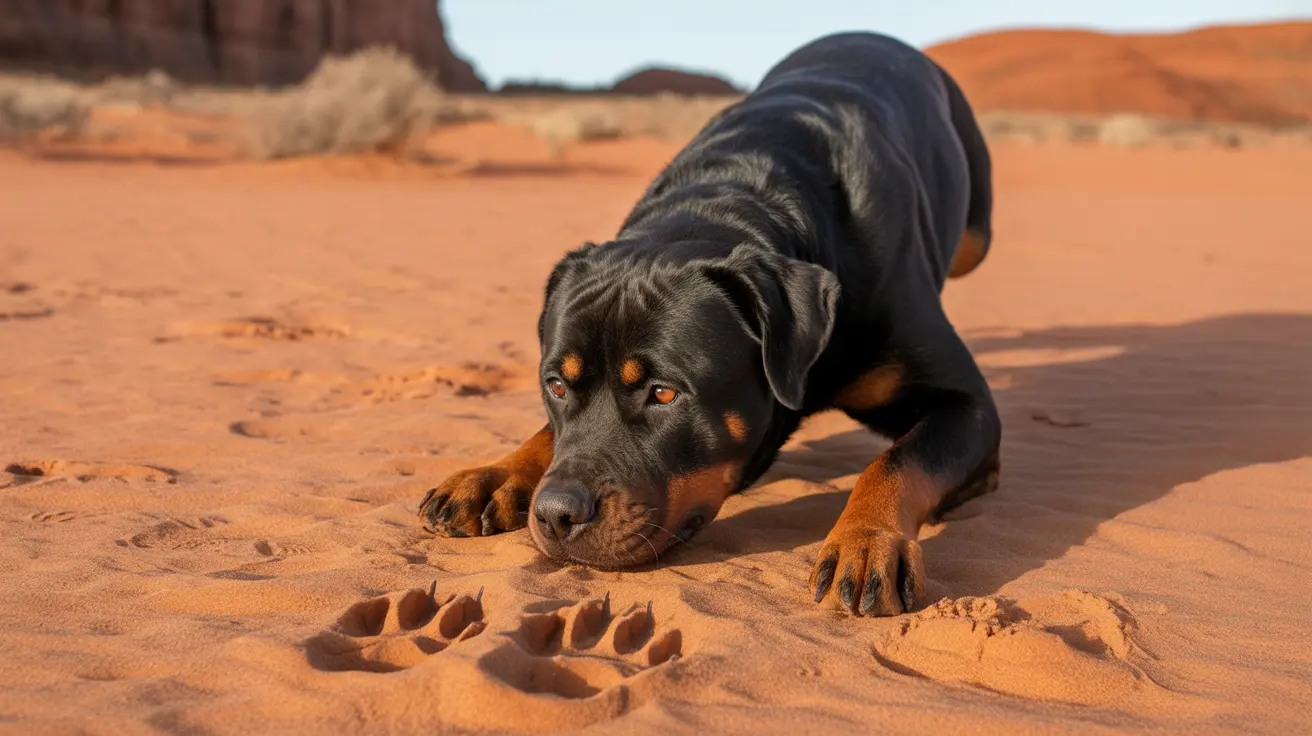Evolutionary Origins and Classification
Dingoes arrived in Australia approximately 4,000 years ago, establishing themselves as one of the region's oldest canine populations. Classified as Canis lupus dingo, they represent a unique subspecies of the gray wolf that has evolved through natural selection in Australia's harsh environment.
In contrast, domestic dogs (Canis lupus familiaris) emerged through intentional human breeding programs, resulting in hundreds of distinct breeds with varied characteristics and purposes. This fundamental difference in their development paths has led to stark contrasts in their genetic makeup and behavioral traits.
Physical Characteristics and Adaptations
Dingoes maintain a remarkably consistent appearance across their population, typically standing around 24 inches tall and weighing between 43-44 pounds. Their distinctive features include a lean, athletic build, sandy-colored coat, erect ears, and a bushy tail – all adaptations that serve them well in their natural habitat.
Domestic dogs, however, show incredible variety in their physical characteristics. From tiny Chihuahuas to massive Great Danes, centuries of selective breeding have produced dogs ranging from 4 to 180+ pounds, with countless variations in coat type, color, and body structure.
Behavioral Differences and Social Structure
Dingoes exhibit complex social behaviors adapted to survival in the wild. They form small, family-based groups rather than large packs, with flexible social structures that respond to environmental conditions and food availability. Their hunting instincts remain sharp, and they maintain a strong independence from humans.
Domestic dogs, through generations of selective breeding, have developed strong social bonds with humans and typically show more dependent behaviors. They readily form pack structures with human families and demonstrate a range of specialized behaviors based on their breeding purpose, from herding to retrieving.
Ecological Role and Diet
In the Australian ecosystem, dingoes serve as apex predators, helping to control populations of native and invasive species. Their hunting prowess and dietary needs reflect their wild nature, with a diet consisting primarily of kangaroos, wallabies, and smaller prey.
Domestic dogs, while descended from predators, have adapted to human-provided diets and generally play no significant ecological role beyond their human-assigned tasks. Their nutritional needs are met through commercial dog food or carefully planned human-prepared meals.
Conservation Challenges
One of the most pressing concerns for dingo conservation is hybridization with domestic dogs. This genetic mixing threatens the survival of pure dingo populations and complicates conservation efforts. Additionally, habitat loss and human conflict present ongoing challenges to dingo preservation.
Frequently Asked Questions
What are the main physical differences between dingoes and domestic dogs?
Dingoes have a consistent appearance with lean bodies, sandy-colored coats, and erect ears, typically weighing 43-44 pounds. Domestic dogs show enormous variety in size, shape, and color due to selective breeding, ranging from 4 to 180+ pounds.
Can dingoes be kept as pets like domestic dogs, or are they always wild?
Dingoes are wild animals and generally cannot be kept as pets. They lack the thousands of years of domestication that make dogs suitable as companions. In most areas, keeping dingoes as pets is illegal without special wildlife permits.
How do the behaviors and social structures of dingoes differ from those of domestic dogs?
Dingoes form small, family-based groups and maintain strong independence, while domestic dogs form strong bonds with humans and readily integrate into human family structures. Dingoes also retain strong hunting instincts and wild behaviors.
Why is hybridization between dingoes and domestic dogs a concern for conservation?
Hybridization threatens the genetic purity of dingo populations, potentially leading to the loss of unique adaptations and behaviors that make dingoes successful in their natural habitat. This genetic dilution could eventually lead to the extinction of pure dingoes.
What role do dingoes play in the Australian ecosystem compared to domestic dogs?
Dingoes serve as apex predators in the Australian ecosystem, helping control populations of native and invasive species. Domestic dogs have no natural ecological role and depend entirely on human care and management.






